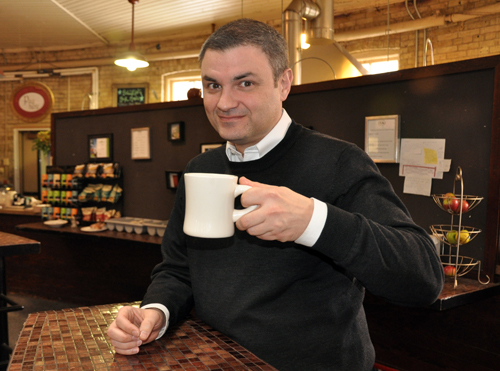
Do you know where your cup of coffee comes from? More importantly, do you care? If you’re like most coffee drinkers, the answer to both of those questions is probably “no,” says history professor Stuart McCook, who studies the environmental history of coffee.
Although fair trade and specialty coffees are growing in popularity, they only account for about 20 per cent of the global market.
“What about the rest of the global coffee industry?” says McCook. “What’s going on there? One would think that the rise of specialty coffees would lead to a corresponding decline in the very worst sectors of the coffee market. In fact, the opposite is true. If you look at the global coffee market, the most dynamic sectors that have seen the largest growth over the last quarter century have been the very top and the very bottom.”
At the top are the specialty coffees made from 100-per-cent Arabica beans. At the bottom are Robusta beans, which are commonly used in instant coffee or blended with Arabica in many grocery store brands. Robusta is often considered the black sheep of the coffee industry even though it makes up over one-third of global coffee production. You could be drinking Robusta and not even know it. Ingredient lists on North American packages of instant coffee and grocery store brands rarely include the types of coffee used in the blend.
“The North American stigmatization of Robusta is culturally constructed,” says McCook. “There are no qualms about [Robusta] in Europe, Africa or Asia.” Many espresso aficionados in Italy, for example, claim that good espresso should include some Robusta beans.
Robusta’s bad reputation in North America is based on its supposedly poor taste. Robusta coffee is usually grown in developing countries by poor farmers who earn less for their lower-quality, grassy-tasting beans than Arabica growers. So why don’t Robusta farmers grow the more profitable Arabica coffee? Climate is one factor. Another factor is Arabica’s susceptibility to coffee rust, an epidemic fungal disease that almost wiped out Arabica plantations in Asia in the mid-19th century.
Although farmers in some countries, such as Sri Lanka, responded to the epidemic by switching to other crops like tea, other farmers wanted to continue growing coffee because it met their need for a low-tech crop with low production costs.
After coffee rust ravaged Arabica crops, colonial powers started looking for other species of coffee that would be equally profitable. When Robusta was discovered in 1900, it filled the void left by Arabica. “Robusta was attractive because it had a higher caffeine content and was also completely resistant to this disease,” says McCook.
The Dutch began cultivating Robusta on a large scale in the Dutch East Indies, and cultivation soon spread across Asia and Africa. Large coffee roasters in North America and Europe used Robusta coffee as a filler in grocery store blends and instant coffee. These ordinary coffees became popular with coffee drinkers around the world because they were inexpensive and easy to prepare. They continue to grow in popularity. Vietnam is now the world’s second-largest coffee producer, growing mostly Robusta.
Farmers who grow Robusta coffee are often just as poor as those who grow Arabica, but the kinds of strategies that have been developed to help Arabica growers in recent years – specialty, fair trade and certified organic coffee – cannot be easily expanded to include Robusta, says McCook. These models depend on consumers who are willing to pay a premium for good-tasting, ethical coffee. Consumers who buy grocery store brands and instant coffees are less interested in paying this premium, since they are not primarily driven by taste or quality. For them, coffee is just a quick pick-me-up.
Solving the problems associated with Robusta coffee isn’t as easy as switching to Arabica. If consumers purchased Arabica coffee exclusively, they would put Robusta farmers out of work. Most Robusta farmers can’t grow Arabica because of their climate or the continuing threat of coffee rust. Switching to other crops like bananas, cocoa or rubber isn’t an option because these crops take many years to reach maturity, and they are susceptible to the same kind of economic and environmental problems as Robusta coffee.
McCook says he tries to buy ethical coffee whenever he can. “Fair trade, certified organic coffees won’t solve all the ecological and social problems of the coffee industry, but it’s a lot better than doing nothing.”